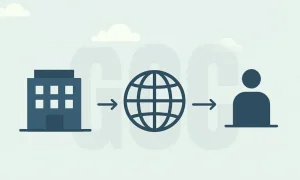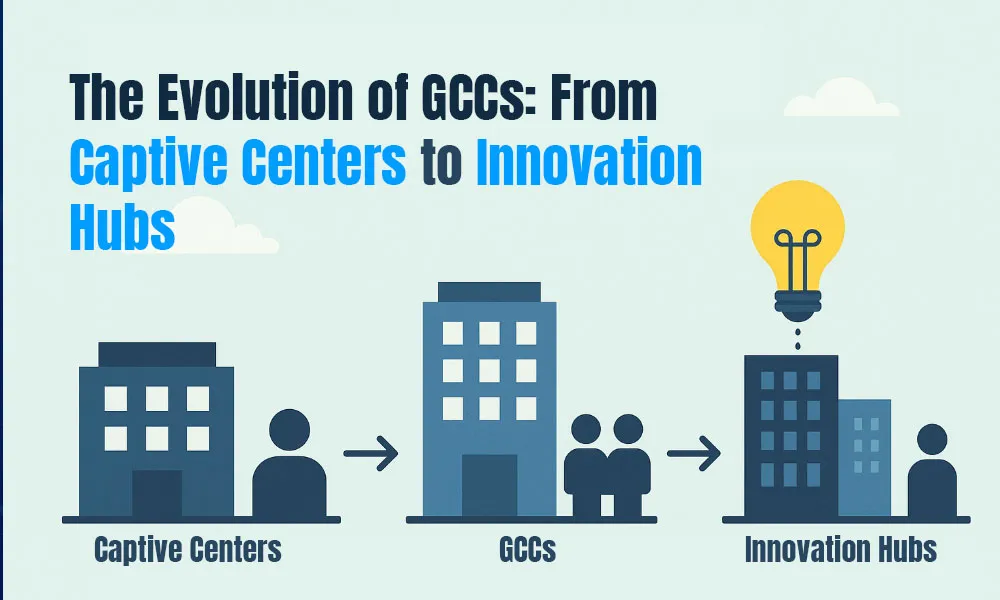The world of business is always abuzz with buzzwords, terms signifying things like new technology, new ways of doing business, manpower management, and such. New ones keep popping up from time to time, and, as is expected, are often short-lived. But some buzzwords continue to hold their position in the top ten for decades. GCC or Global Capability Center is one such, and we are here to tell you why you must pay attention to it TODAY, no matter whether you are a budding entrepreneur or a seasoned campaigner in the battleground called international business.
The global capability center market size is projected to grow from an already staggering $64B in 2024 to a humongous $105B by 2030! (Source: Reuters)
What is a Global Capability Center (GCC)?
Yeah, what is it? Despite the term having endured for so long, there still seems to be some confusion as to the whole concept of GCCs among founders. In the strictest sense, a Global Capability Center is an organization effectively within a larger organization that is engaged in a host of activities and effectively serves as a backbone to the larger body. Now, GCCs are almost always separate companies operating out of resource-rich, low-cost countries like India or the Philippines, well-known for the availability of talent across the board. And cloud staffing is the bedrock on which GCCs stand. I’ll explain it in a bit.

Imagine a brand like Microsoft. It is gigantic and has too many complex processes running parallel to each other. With time, some of these processes will become so large that they’ll need an entire battalion of employees to manage. Under the given circumstances, it only makes sense for Microsoft to join hands with an offshoring partner who also happens to be an expert in the said process and has been doing it for other companies over the past few years. If the deal goes through, Microsoft will have appointed a GCC, maybe in a city like Bangalore or New Delhi. Now you get it, don’t you?
The Origin of GCC
Global capability centers in countries like India are now hailed for their innovation and cutting-edge work in a host of fields like IT, engineering, AI, statistics, economics, sales—you name it. Let’s just say, all major organizations across the globe are reliant on GCCs to the point that they can’t function without them.
Commodity trader Cargill is planning to expand the workforce in its global capability center in India by around 500 this year. [Source: Reuters, Link: https://www.reuters.com/markets/commodities/commodity-trader-cargill-add-500-jobs-its-indian-global-centres-3-years-2025-03-04/]
McDonald’s, Bupa, and Tesco have been hard at work, transforming their global capability center companies into AI-focused R&D hubs. [Source: Financial Times, Link: https://www.ft.com/content/a46ee948-07c0-4083-9610-1d85d7e15cc7]
German semiconductor behemoth Infineon Technologies has plans to open a GCC in the Indian state of Gujarat with a capacity for employing 400 engineers.
But the baby steps leading to the GCC boom, we’re witnessing right now, were taken way back in the 80s and 90s when Texas Instruments and General Electric started their back-offices in India—Indian partners handling laborious but mundane jobs like customer support, IT support, data entry, etc. Then the Business Process Outsourcing (BPO) boom hit in the early 2000s. India came up top in the global IT race and proved it could handle complex IT processes like a boss. Everyone from Citibank, American Express, Wipro, HSBC, and the lot was now lining up to outsource critical processes to BPO firms in India, and unknowingly laying the foundations of the modern GCC.
Cut to 2025, and we see industry giants like Microsoft and Adobe tasking their Indian global capability centers to develop proprietary software. The evolution of the humble call center into a captive center and then into a full-blown R&D unit is no short of a miracle made possible by the relentless efforts of staff augmentation companies from India.
What Does a Modern GCC Look Like?
Well, it looks smart and well-equipped, if a one-liner’s what you are looking for! For starters, a modern-day global capability center is armed to the teeth with the latest tech and folks who know how to operate it. We’re talking experts in AI/ML, blockchain, full-stack development, financial accounting, digital marketing…basically the whole shebang. So, if you are a firm in Minnesota having trouble keeping your books or developing a smart app that reads the user’s mind, just drop an email to a staff augmentation firm in India, and they’ll be happy to work as your GCC partner.
Underneath these global partnerships lies a sound strategy—the grand global capability center strategy, as industry experts love to call it.
- GCCs are increasingly tasked with developing proprietary technologies and intellectual property.
- Many Indian Global Capability Centers are spearheading their parent organizations’ digital initiatives.
- India boasts a staggering 1800 global capability centers, operating within its shores, employing millions, and contributing billions to the global economy.
How Staff Augmentation is Enabling GCCs

At the heart of every successful GCC lies one powerful enabler: staff augmentation, a.k.a cloud staffing. Global giants like Cargill or Adobe don’t always have the time or flexibility to build massive teams in-house. Instead, they rely on Indian cloud staffing partners to supply skilled professionals who can work on both long-term and short-term projects. AI engineers today, blockchain experts tomorrow. Exactly when needed. The staff augmentation model cuts costs, speeds up execution, and lets GCCs experiment boldly without the burden of permanent overheads. In many ways, cloud staffing is the catalyst transforming GCCs from support centers into innovation hubs, without any brouhaha. So, staff augmentation or cloud staffing is another buzzword to follow.
Where Does It All Lead To?
So, where does this GCC story end up? Is it a bubble waiting to burst, leaving investors hobbling for a new support system in the aftermath? Well, if the projections are to be believed, global capability centers, especially those in India, look ready for a mission to Mars. Why, there is a bunch of Indian technology firms aiding ISRO (Indian Space Research Organization) in its ultra-cost-effective space missions! Who’s to say they might not end up partnering with SpaceX or Blue Origin in the near future?



